By Jim Skinner, Sheriff, Collin County, TX and Chairman of the National Sheriffs’ Association Government Affairs Committee
The United States is suffering greatly from high crime rates and a surge in illegal drugs, such as fentanyl, being transported across our porous southern border. These are causing a sharp rise in overdose deaths in our communities.
Battling these challenges remains the highest priority for the National Sheriffs’ Association. Unfortunately, our leaders in Washington have not sufficiently prioritized solutions to the greatest safety threat faced by our communities nationwide. Thus, our challenge is: How can our nation degrade and diminish the Cartel-China connection that has resulted in the death and destruction of our neighborhoods?
Most Americans agree that crime is a problem in their community. The lack of consequences for criminal actions is the main reason. Additional trained law enforcement personnel are needed in one-half of communities. Americans attribute a lack of respect for law enforcement for the shortage.
Those are the shocking findings of an online TIPP Poll for the National Sheriffs’ Association of 1,414 Americans nationwide completed in early April. They suggest that crime is a widespread problem nationwide and must be urgently addressed.
Magnitude Of The Problem
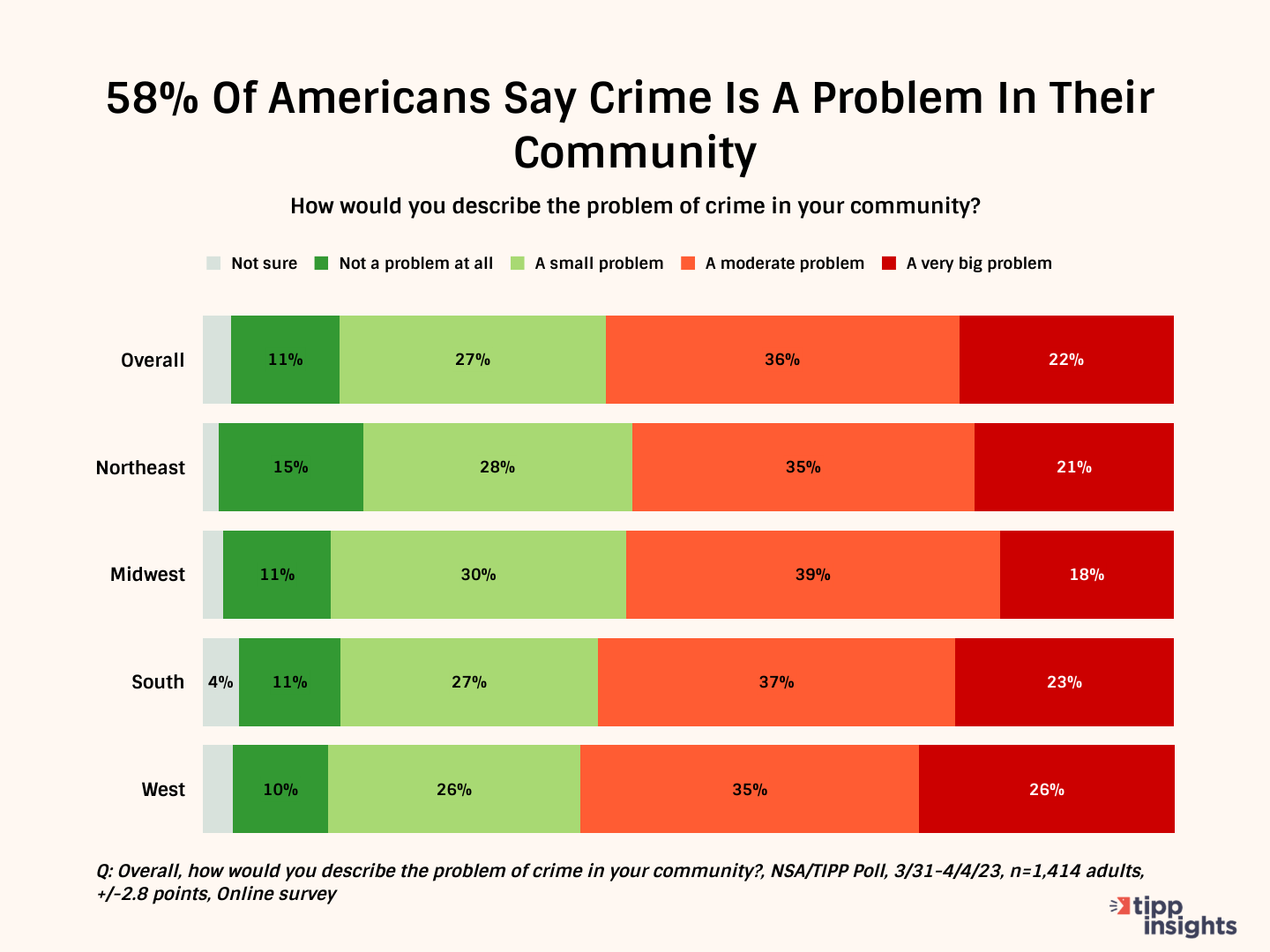
In the TIPP Poll, respondents were asked to describe the severity of crime in their communities. They were given choices ranging from "not a problem at all" to a "very big problem," with "moderate problem" and "small problem" in between. Shockingly, 58% of respondents reported that crime is a problem in their communities, with only 38% stating it is not. Of those who reported crime as a problem, 22% described it as a very big problem, and 36% said it is a moderate problem.
Regionally, the poll found that most respondents from the West (61%) and South (60%) reported that crime is a problem in their communities. In the Northeast, 56% of respondents reported the same, and in the Midwest, 57% did so.
The TIPP Poll also analyzed the perception of crime by residents living in different areas. The poll found that over two-thirds of those living in urban areas (68%) consider crime a problem in their communities. A majority (58%) of suburban residents also share this sentiment. However, the situation is different in rural areas, where most respondents (51%) said that crime is not a problem in their communities. In comparison, 45% did report that it is a problem.
These findings suggest that while crime is a concern across the country, its prevalence varies depending on the type of community. Policymakers and law enforcement agencies must consider these differences when designing and implementing strategies to address crime and promote public safety.
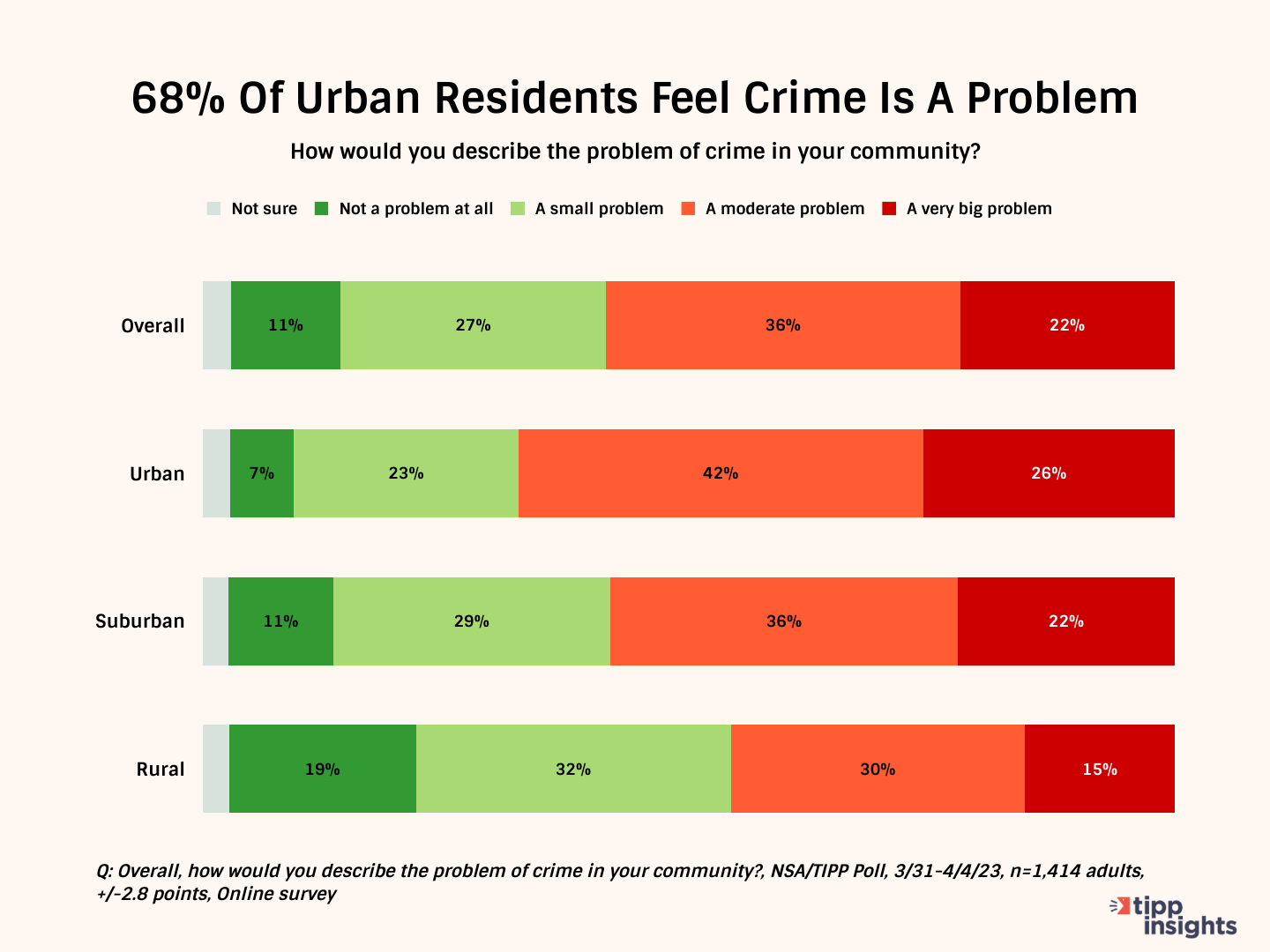
Almost seven out of ten Hispanics (69%) reported that their communities have a crime problem, which is significantly higher than the percentages reported by Black (58%) or White (56%) individuals.
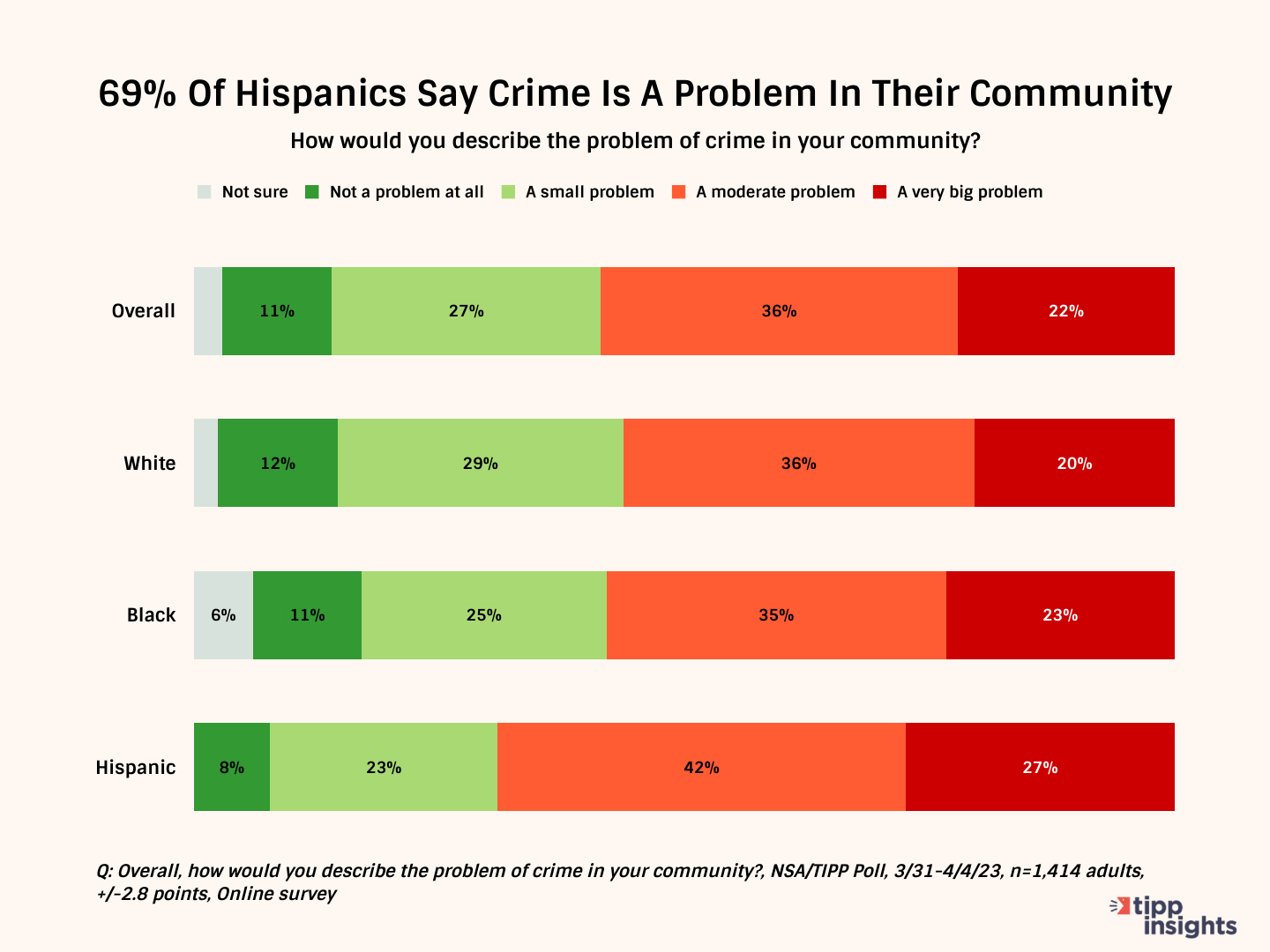
Reasons For High Crime
Further probing of survey respondents revealed several reasons crime is a problem in their communities.
According to those who consider crime a big problem, the lack of consequences for criminal actions is the most prominent reason, with 54% of respondents selecting it as the primary cause.
Other reasons include high unemployment rates (37%), too few law enforcement personnel (36%), and too few of social services (34%). In addition, 28% of respondents cited too few educational support services as a contributing factor.
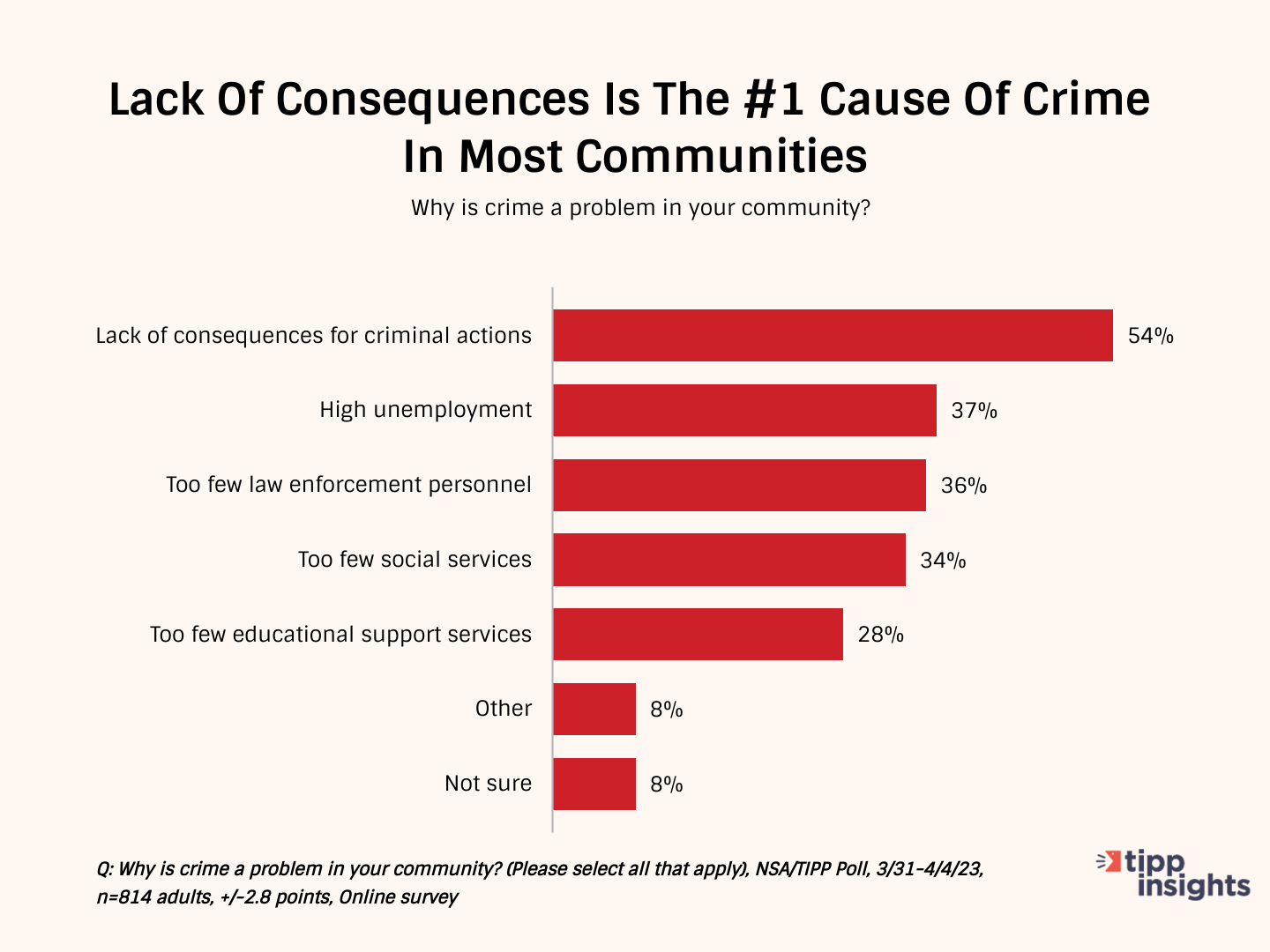
Shortage of Trained Law Enforcement Personnel
A significant number of Americans believe that their communities suffer from a shortage of trained law enforcement personnel. According to the TIPP Poll, half of the respondents expressed this concern, with notable variations across different regions of the country.
The poll found that 56% of those residing in the West, 50% of those in the Midwest, 49% of those in the South, and 46% in the Northeast believe that their communities are affected by a shortage of trained law enforcement personnel.
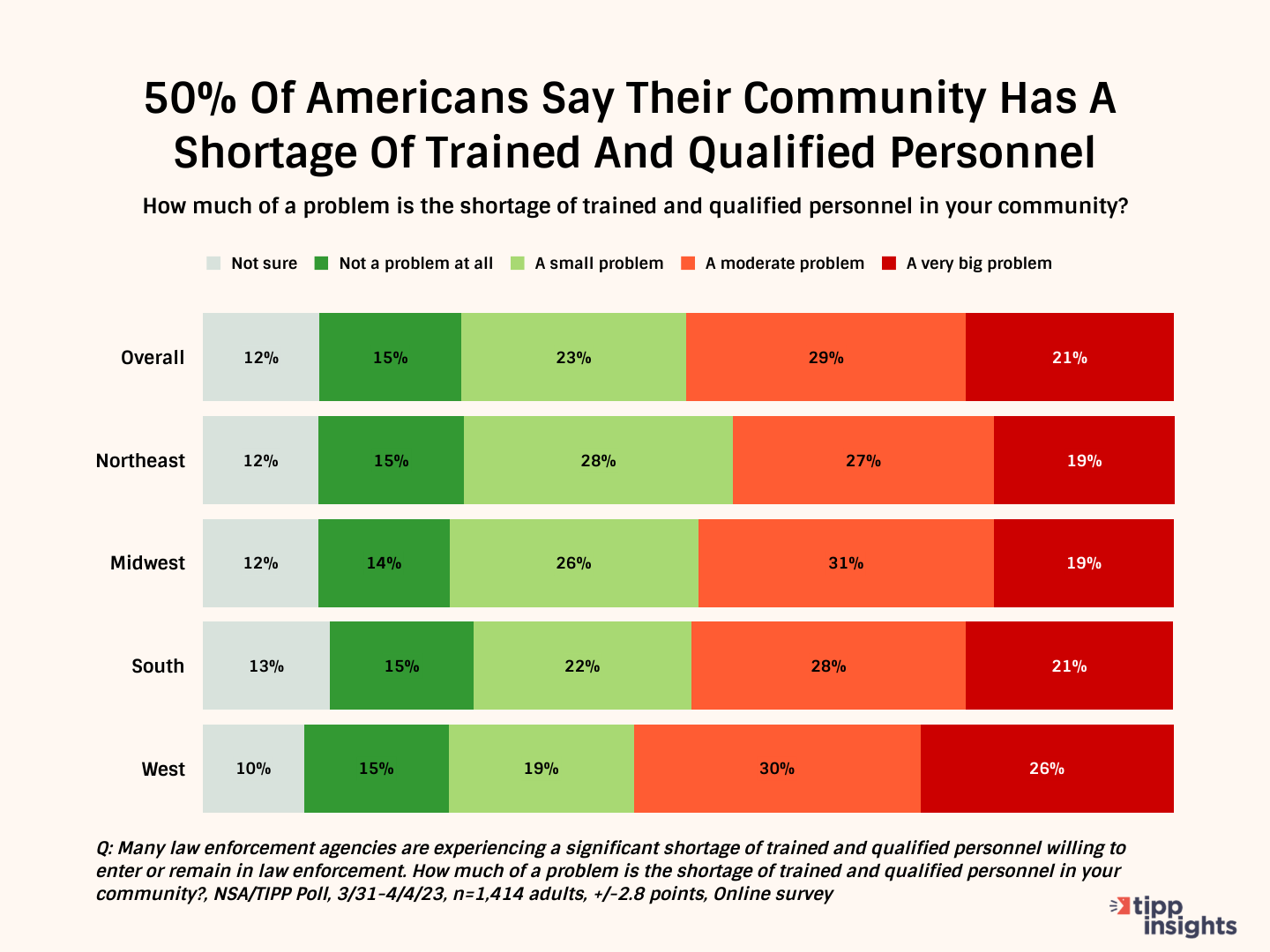
Most urban (56%) and suburban (51%) report a shortage of trained personnel. The only exception is rural areas (50%), with one-half saying the shortage is not a problem. However, 42% of rural areas suffer from personnel shortages.
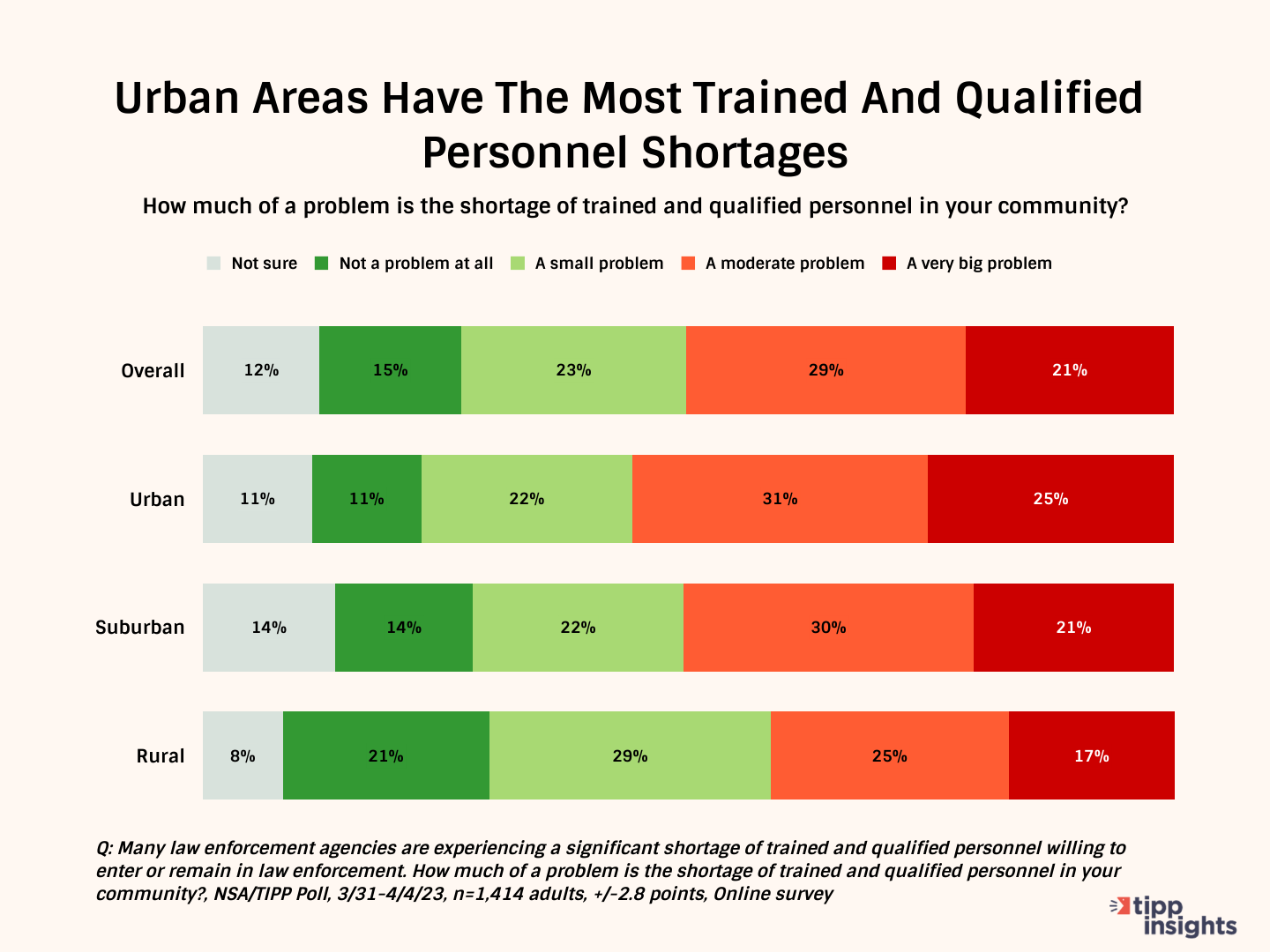
Reasons Behind Trained Law Enforcement Personnel Shortages
The reasons behind this shortage are complex and multifaceted, with several factors contributing to the problem.
The top two reasons cited for the shortage of law enforcement personnel are a lack of respect for law enforcement (44%) and inadequate salary and benefits (43%).
Additionally, 39% of respondents identified the danger of the profession as a factor, while 37% cited fear of being wrongly accused of bad, illegal, or unethical behavior. Another 34% believed that a lack of integrity in the profession was a contributing factor, and 34% identified too much crime as a challenge.
Other reasons cited included too little consequences for crime (30%) and a too little economic opportunities (26%). Additionally, 34% of respondents expressed fear of backlash by the community to being in law enforcement.
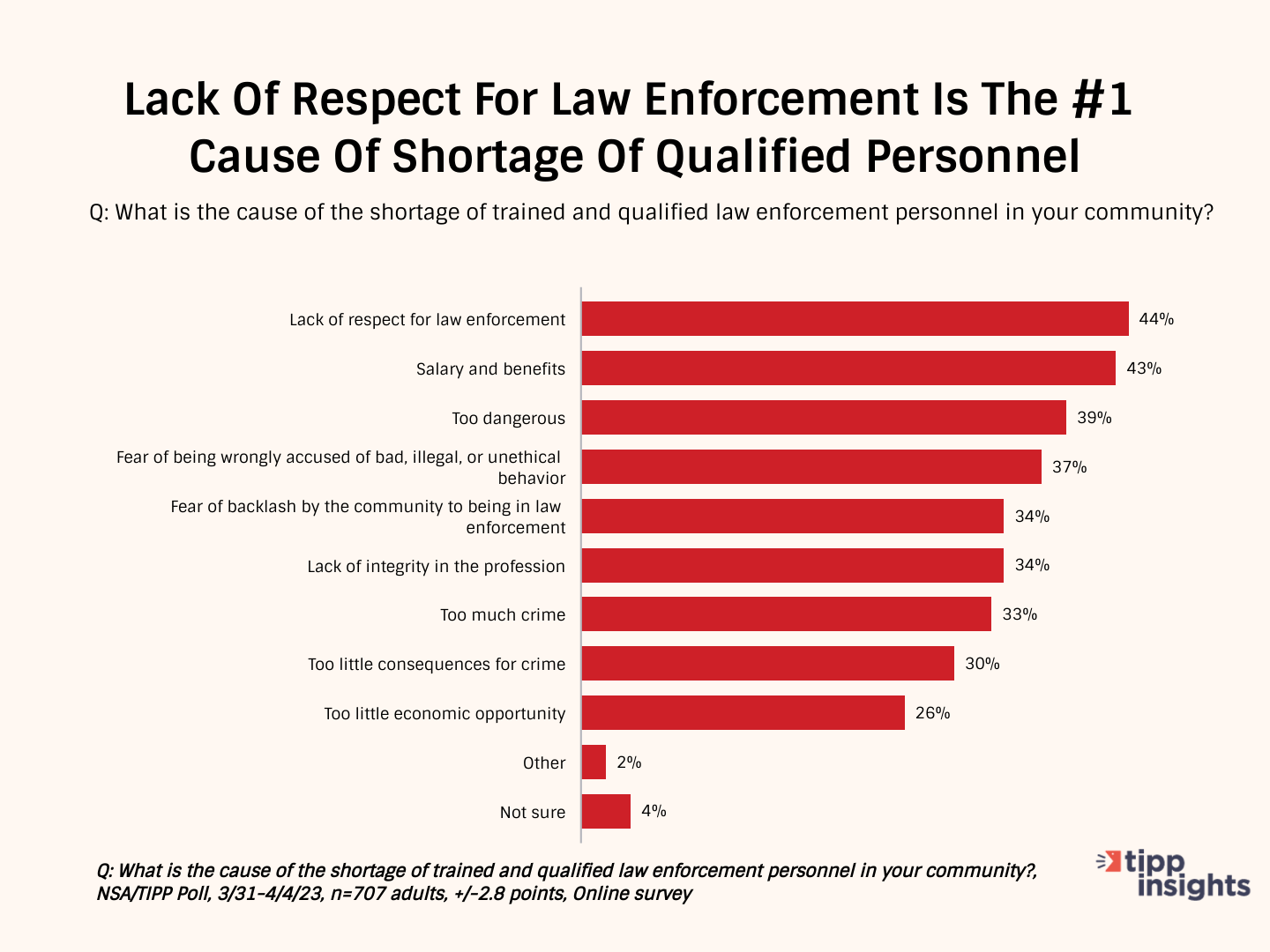
Summary
Most Americans believe that crime is a problem in their communities, with the lack of consequences for criminal actions being the primary reason. Half of the respondents expressed concern about the shortage of trained law enforcement personnel, with a lack of respect for law enforcement and inadequate salary and benefits cited as the main reasons. The survey also reveals that crime prevalence and perception vary by region and community type. Policymakers and law enforcement agencies must consider these differences when developing strategies to promote public safety.
About The Survey
TechnoMetrica conducted The TIPP Poll, an online survey for the National Sheriffs' Association, from March 31 to April 4. The nationwide study had a sample of 1,414 Americans, 18 or older, and TechnoMetrica's network of panel partners provided the study sample. Upon the study completion, TechnoMetrica weighted the study dataset by gender, age, race, education, and geographical region to mirror known benchmarks such as the U.S. Census. The survey’s credibility interval (CI) is +/- 2.8 percentage points, meaning the study is accurate to within ± 2.8 percentage points, 19 times out of 20, had all Americans been surveyed. Due to smaller sample sizes, subgroups based on gender, age, ethnicity, and region have higher credibility intervals.
Want to dig deeper? Download data from our store and pay what you can afford!
Like our insights? Show your support by becoming a paid subscriber!









